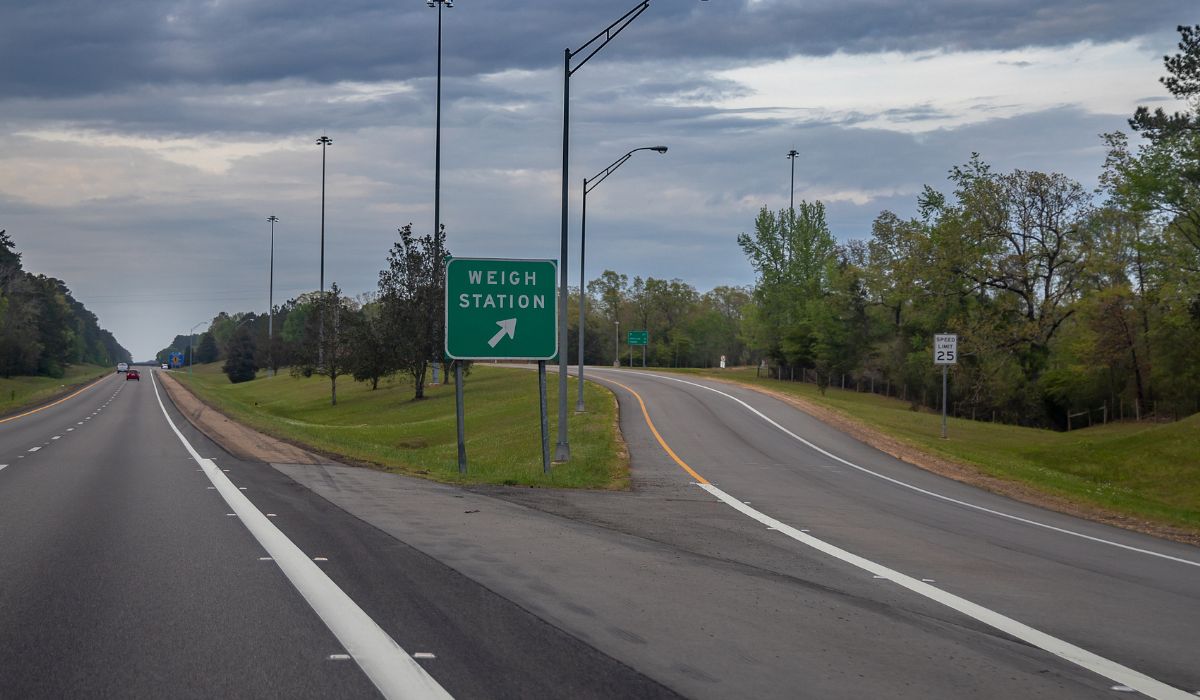
Truck Driver’s Guide to Weigh Stations

Truck Driver’s Guide to Weigh Stations
You’ve likely noticed the occasional herding of trucks into a weigh station, triggered by flashing lights beckoning truckers in for a — hopefully — short visit. But what goes on at a weigh station is a mystery to most motorists who drive by in their carefree minivans and SUVs while truckers’ inch forward towards their big moment.
What is a weigh station?
After the Federal-Aid Highway Act was established in 1956, weigh stations became a reality. The purpose of the act was to protect the infrastructure of our highways by limiting the weight and capacity of trucks traveling on them. Originally, weigh stations were largely utilized to collect road taxes from commercial vehicles on the road, where drivers paid their fuel taxes at kiosks. Despite the fact that many corporations pay them on a quarterly basis, these taxes can still be paid at weigh stations today.
Today’s weigh stations serve as the primary locations where the Department of Transportation inspects a commercial vehicle’s weight, and, if necessary, completes inspections on the vehicle and trailer to ensure they are compliant with applicable standards.
Why do we need to get weighed?
Commercial vehicles are typically authorized to weigh a maximum of 80,000 pounds in the United States. Of course, there are circumstances and freight that exceed the imposed weight restrictions and, in these cases, drivers must obtain special permits in order to transport loads of that size.
The fundamental goal of weighing a truck is to ensure road safety. Because some roads and bridges may be unable to handle trucks of a specific weight, it is critical to keep an eye on the weight of a truck and guarantee that nothing is damaged as a result of excess weight. Some states, however, have their own restrictions on how much a truck can weigh so it’s advised to check your state limits before you move your freight.
Who needs to stop?
Commercial vehicles exceeding 10,000 pounds are required to enter a weigh station when the signs indicate the scales are open. Depending on the location, some have LED displays indicating OPEN or CLOSED, while others have flashing lights to indicate their status.
Carriers can also invest in bypass software programs such as PrePass and Drivewyse that allow registered users to roll past weigh stations without the inconvenience of stopping at the scales.
What happens?
When drivers note that a scale is open, they are required to exit the highway and enter the weigh station. Each station in each state has varying regulations and speed limits so drivers must observe the posted rules. Some require a complete stop, others allow slow speeds of 3-5 mph, while others allow drivers to roll through at speeds as high as 30 mph or more.
Once weighed, green and red lights indicate the next steps. Green is the ideal, directing drivers to reenter the highway. Red lights indicate that further inspection is required. Inspections range from Level 1 through Level 6 with varying degrees of equipment analysis. In the event that a truck is overweight, freight will need to be reallocated. A DOT inspection can also result in fines or trucks being deemed unsafe and taken off the road until repairs are completed. In this case, fines and penalties can be imposed upon the driver and carrier as well – A good reminder to thoroughly complete your daily Driver Vehicle Inspection Report.
Driver Etiquette
Weigh stations are a reality for truck drivers, and every truck driver is trying to meet a deadline. Follow the rules, roll through as needed, stop as required, and keep moving.
If you find yourself in the unfortunate situation of being pulled in for inspection, remain calm, polite, and understanding. You will not yell your way out of an inspection, but you could yell your way into further delays with further inspections.
Most of the time, drivers roll through weigh stations with minimal delays. Aside from the brief slow down, you’ll likely be on your way in just a few moments.




